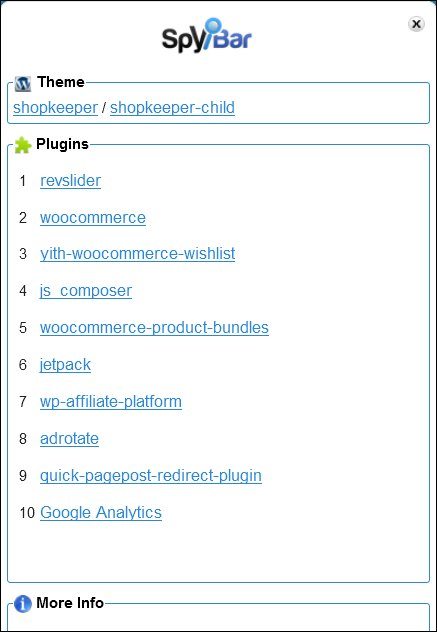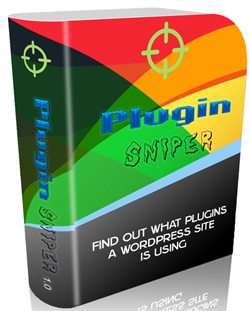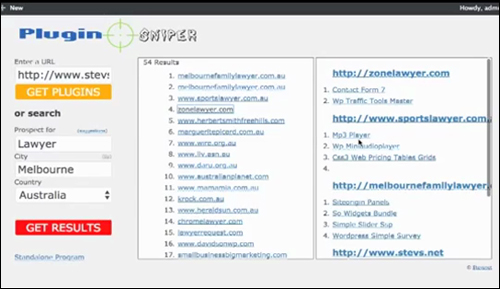 When the “blogging revolution” first began, blogs looked like blogs and websites looked like websites. You could easily tell the difference between the two.
When the “blogging revolution” first began, blogs looked like blogs and websites looked like websites. You could easily tell the difference between the two.
Then the WordPress CMS came along and changed everything. Now, it’s getting harder to tell the difference between what applications are being used to build the two. Not so much in terms of what the sites are being used for, but in terms of website design and also being able to tell what’s “under the hood”.
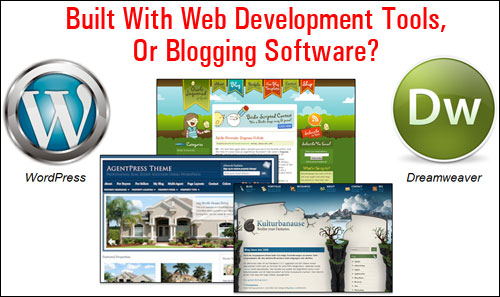
(It’s Getting Harder To Tell Websites Built With Web Development Tools Vs ‘Blogging’ Software!)
For website owners, understanding the difference between a Content Management System application like WordPress and other website-building tools is huge, not so much in terms of the technical differences, but more importantly, in terms of the things that matter to most website owners, like web development costs, ease of use, ability to maintain the website up-to-date, managing content, etc.
Think about this …
Which of the following options would you choose?
A) An eye-catching, professional-looking website that turns out to be quite expensive to build, or
B) The same eye-catching, professional-looking website, but for a fraction of the cost of getting option ”A” above built.
If you went with option “B”, then you need to learn more about WordPress, why WordPress can give you an attractive, professional-looking and fully functional website that will typically end up costing you far less to build than websites which are built with website-building software … and how to tell these apart!
WordPress is the world’s leading online publishing platform and content management system (CMS). It is a budget-friendly CMS suitable for businesses on a budget.
Whether your reason for having a web site is for personal blogging or business use, WordPress is easy enough for a newbie with no knowledge of coding to use, yet it offers an array of helpful tools that make your web presence highly effective when it comes to getting your content published, promoting visitor engagement, generating business leads and sales, enhancing your site’s capabilities, etc.
With almost one in every five websites around the world being powered by WordPress, chances are that if you already own a website, your site is probably powered by WordPress too.
And if you don’t have a website yet, or are thinking of getting a website built, then wouldn’t it be great to show your web developer an existing website with the design and layout that you like, know that it was built with WordPress and that you can, therefore, get something similarly built for your business quite inexpensively?
How Can I Tell If A Website Was Built Using WordPress?
Do you need to know if your website uses WordPress? Maybe you’ve come to our site because you’ve heard or read wonderful things about all of the great benefits and advantages of using WordPress, and you’re now wondering if your site was built using the WordPress software, or some other CMS application.
Also, have you ever looked at a competitor’s website and wondered what they’re doing to try and get better results online?
Knowing if your competitor’s site is built with WordPress can tell you a few things about their strategies and methods, such as what themes or plugins they are using.
Here are some simple methods you can use to quickly tell if sites are powered WordPress:
Check Your Page’s Source Code For A WordPress Footprint
If you know how to search the source code of a web page (e.g. Firefox Menu > Web Developer > Page Source if using Firefox, or Google Menu > More Tools > View Source if using Google Chrome), you can look for telltale footprints …
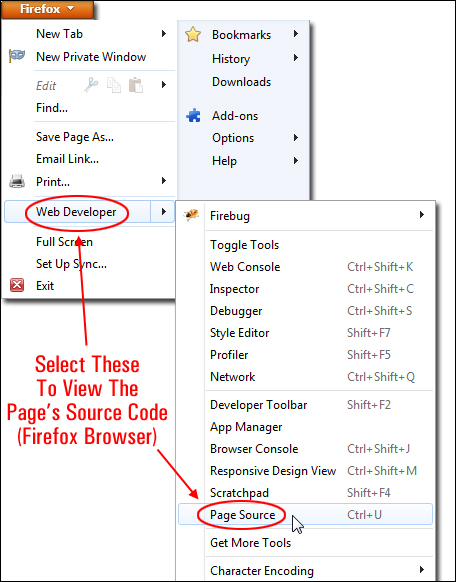
(Viewing the web page source code using the Firefox browser)
Suppose that you are surfing the web and you come across a site that you like, and you wonder if the site was built using WordPress …

First, bring up the site’s source code on your screen, using the methods described above.
In the source code, you can search for “wp-content” either manually …
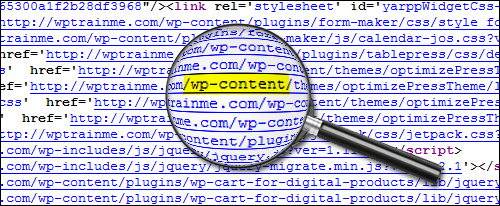
Or using your browser’s “Find” function …
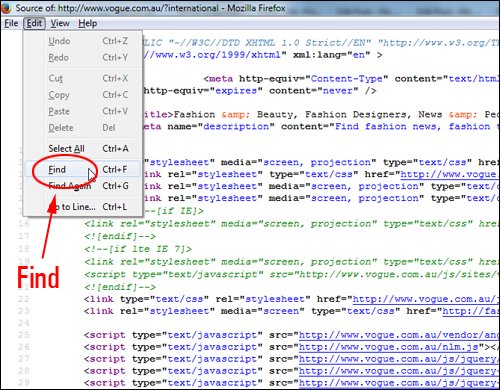
(Using the Firefox web browser ‘Find’ function)
This will tell you if the site is powered by WordPress or not.
Note: If you do not see “wp-content” in the page source code, it does not necessarily mean that the site you’re looking at is not a WordPress site.

There are other ways to tell if the site runs on the WordPress software, as we will soon discuss.
As the focus of this article is to help non-technical users, however, we have listed below a number of easy methods you can use to check if your web site is powered by WordPress other than looking at the source code.
Simply Ask Your Webmaster
While this may seem like the obvious thing to do, many website developers, for whatever reason, will build clients a website and not tell them it’s WordPress.
If you employed the services of a website developer or got somebody else to build your website, just ask your web developer or whoever built your website if the website has been built using WordPress.
That was simple, huh?
Okay … what if you can’t reach the person who built your website, or what if you’ve come across a website that you really like while surfing the net and want to know if the site was built using WordPress?
Powered By WordPress
If the site uses a WP theme and the template has not been customized, you will often see a “Powered by WordPress” notice shown at the bottom of the site …

(Powered by WordPress – footer section)
If the methods above haven’t helped you, here are some other ways of telling whether a site uses WordPress or not …
Sites That Can Tell You If A Website Runs On WordPress
Here are a couple of online applications that can tell you if a particular website uses WordPress or not, and what themes or plugins the site uses …
IsItWP.com
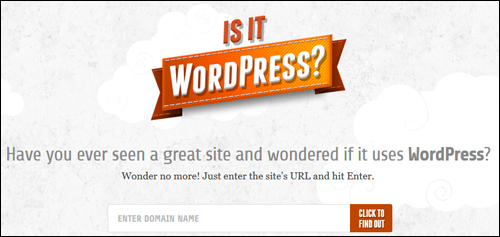
(Is It WP – WordPress Website Checker)
Is It WP? is a free tool that lets you easily check if a site was built with WordPress or not.
Using this tool is very easy. Just paste the URL of the website into the search field and click the button.
The tool will go through the URL pages and tell you if the site was built using WordPress, and if so, it will even tell you the version of WordPress the site is currently using …
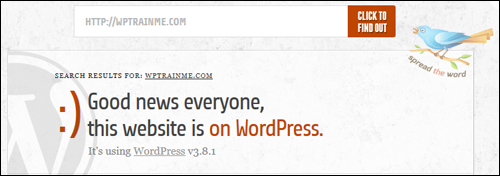
If the site is not a WordPress website, you will see a message similar to the one shown in the screen shot below …
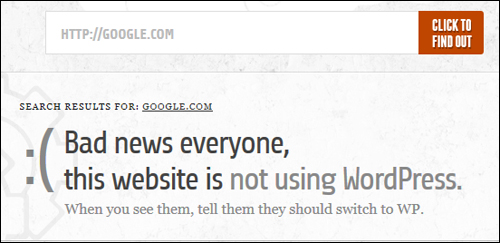
To use this tool, go here:
Advanced WP Theme Checker by Satori

(WordPress Theme Detector)
WordPress Theme Detector by Satori Studio is a free tool that can help determine whether or not a website uses WordPress as its CMS engine; it will also tell you which theme the site is using and provide a link to the theme’s official page.
To use this tool, paste the URL of a web page (it doesn’t have to be the home page) into the ‘Enter website URL’ field and click on the ‘What WordPress theme is that?’ button …

(Enter website URL and click the button)
The Detector will automatically scan the website and output its theme information …
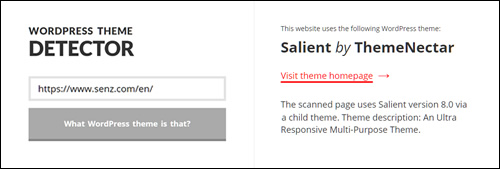
(WordPress Theme Detector displays theme results)
If a website is built with WordPress but the theme is too customized to contain any traces of its origins, the Detector will still let you know it’s a WP site by outputting a message on the right.
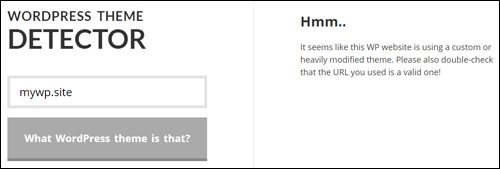
(Modified WordPress theme message)
If the website is not using WordPress at all, the tool will also let you know …
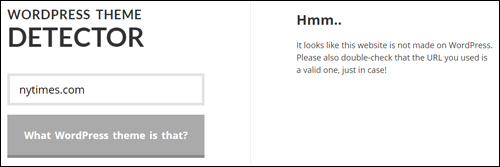
(This website is not WordPress)
You can try the Detector yourself by visiting this link:
Wappalyzer

(Wappalyzer)
If you browse the net using either the Firefox or Chrome web browsers and would like to be able to see if the sites that you are visiting are WordPress sites, then Wappalyzer is a great extension to add to your browser.
Wappalyzer identifies what software is installed in the sites you are visiting.
According to their website …
“Wappalyzer is a browser extension that uncovers the technologies used on websites. It detects content management systems, eCommerce platforms, web servers, JavaScript frameworks, analytics tools and many more.”
Wappalyzer is also very easy to install and very easy to use.
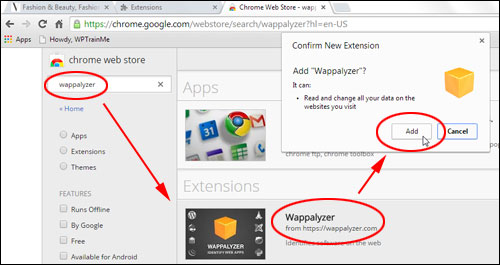
After installing Wappalyzer on your browser, icons will appear in your web browser, in the URL field identifying which technologies are installed on all the sites you visit …
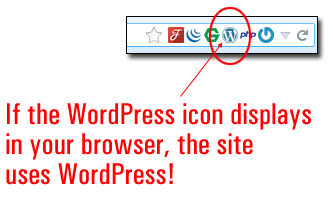
If the WordPress icon displays on your browser menu (as shown in the screenshot above), then the site uses WordPress.
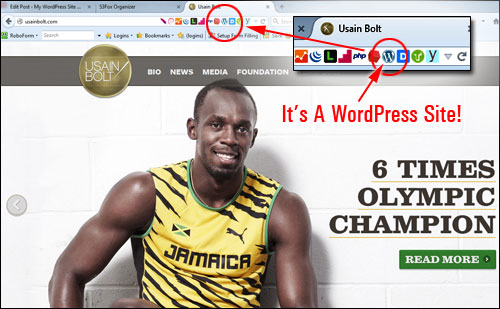
(This is a WordPress site!)
To visit the Wappalyzer add-on site, go here:
SpyBar
(SpyBar – Browser Addon For WordPress)
SpyBar is a browser addon that lets you ‘reverse engineer’ any WordPress site you visit and see which WordPress plugins and themes are being used, right inside your web browser …
(SpyBar – Discover WordPress Plugins And Themes Used By Your Competitors)
SpyBar can be installed as a browser extension on Google Chrome and Mozilla Firefox and is compatible with PC and Mac.
To download or learn more about SpyBar, visit the site below:
Plugin Sniper
(Plugin Sniper – Find out what plugins a WordPress site is using)
Plugin Sniper lets you find out what plugins a WordPress site is using. This is a useful tool if you want to know what WordPress plugins are being used by your competitors.
Plugin Sniper is also a useful tool for researching what kinds of plugins businesses in certain niches are using …
(Search WordPress sites by categories and location)
To download or learn more about Plugin Sniper, visit the site below:
We hope you have found the above information useful.
***
"I was absolutely amazed at the scope and breadth of these tutorials! The most in-depth training I have ever received on any subject!" - Myke O'Neill, DailyGreenPost.com


